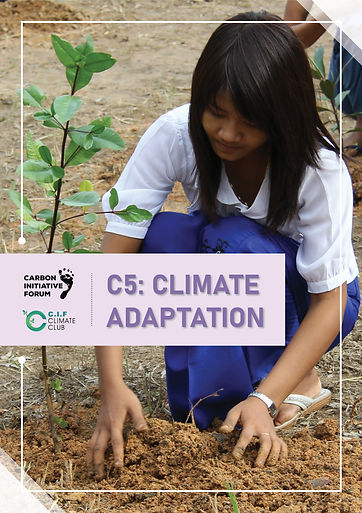
"It's Code Red For Humanity"
 |  |  |
|---|---|---|
 |  |  |
 |  |  |
 |  |
THE CLIMATE BOOK
Whether you’re a lifelong environmentalist, an activist just starting out, or someone totally new to the concept of climate change, our Climate Book is the right place to start learning about all things climate change.
The Heat Is On
The atmosphere knows no borders; climate change is a “global common problem.” On Earth, human activities are changing the natural greenhouse. Currently, the Earth is already about 1.1°C warmer than it was in the late 1800s, and emissions continue to rise. 2019 was the second warmest year on record and the end of the warmest decade (2010-2019) ever recorded. It is important to note that the top three greenhouse gas (GHG) emitters — China, the United States and India, contribute 41.5% of total global emissions.

Systems Change,
Not Climate Change
In 2015, governments adopted the Paris Agreement, agreeing to hold global average temperature rise “well below 2°C” and, if possible, 1.5°C. Implementation of the Paris Agreement requires economic and social transformation, based on the best available science. To meet this target, the estimated emissions need to fall between a fourth to less than half of current levels over the next decade (UNEP, 2019). But as of today, countries’ collective emission reduction pledges remain far from sufficient.

Reconceptualising Climate
Change Legislation
India, the third largest emitter of GHGs and, one of the most climate-vulnerable countries has made numerous initiatives, for example, the National Action Plan on Climate Change (NAPCC) to deal with climate change impacts. But an obvious problem remains the lack of a robust enforcement mechanism, which may prevent the fulfilment of its climate commitments. Therefore, India must re-conceptualise its climate governance model by enacting a national climate law that addresses and covers all aspects of climate action, including its monitoring and evaluation.

For A Liveable Climate
Responding to climate change involves two possible approaches: reducing and stabilizing the levels of heat-trapping GHGs in the atmosphere (“mitigation”) and adapting to the climate change already in the pipeline (“adaptation”). Mitigation can be carried out in two ways, either by reducing sources of these gases (for example, the burning of fossil fuels for electricity, heat, or transport) or enhancing the “sinks” that accumulate and store these gases (such as the oceans, peatlands, forests, and soil).

Spending Now Saves
Lives Later
As our climate changes, we will need to adapt. The faster the climate changes, the more difficult it will be. The goal is to reduce our risks from the harmful effects of climate change. While climate change is a global issue, it is felt locally. Local governments are therefore at the frontline of adaptation. Cities and local communities worldwide have been focusing on solving their own climate problems. For example, they are working to build flood defences, improve water storage and use and food security.

Investing In Our Planet
Climate finance refers to local, national or transnational financing—drawn from public, private and alternative sources of financing—that seeks to support mitigation and adaptation actions that will address climate change. In accordance with the principle of “common but differentiated responsibility and respective capabilities” under the Paris Agreement, developed country Parties are to provide financial resources to assist developing country Parties in implementing the objectives of the United Nations Framework Convention on Climate Change (UNFCCC).

Race To Zero Emissions
Net-zero means cutting GHG emissions to as close to zero as possible, with any remaining emissions re-absorbed from the atmosphere, by oceans, soils, and forests. To keep global warming to no more than 1.5°C, emissions need to be reduced by 45% by 2030 and reach net-zero by 2050. Transitioning to a net-zero world calls for nothing less than a complete transformation of how we produce, consume, and move about. The energy sector is the source of around three-quarters of GHG emissions today and holds the key to averting the worst effects of climate change. However, current commitments made by governments worldwide to date fall far short of what is required.

Be Aware. Make Aware.
There hasn’t been enough awareness and conversation on climate policy therefore, expectation from the public towards policymakers and corporations is lacking. We need to make climate a voting issue in every country. Thus, youth education represents one of the most effective tools to combat the destructive potential of climate change. Young people are agents of change, entrepreneurs and innovators. They should be given a chance and defined role to take an active part in the decision-making of local, national and global level climate policies.

